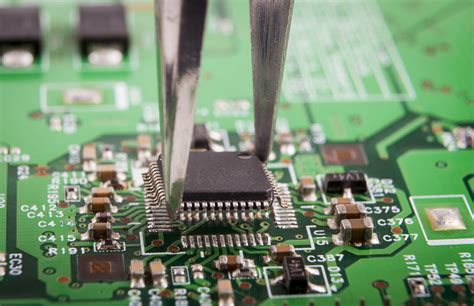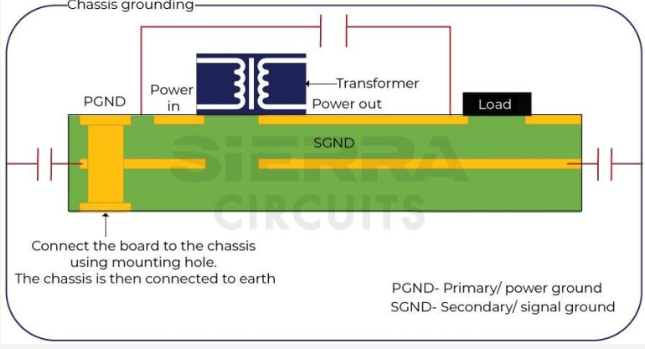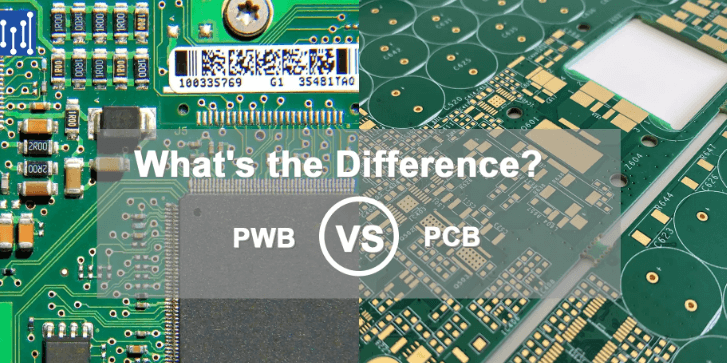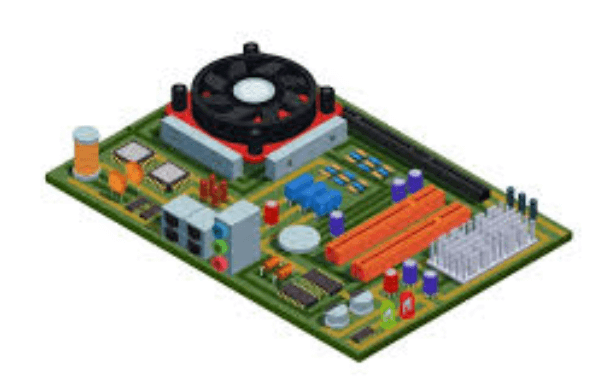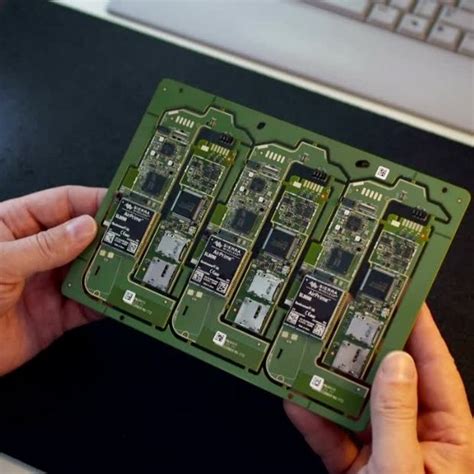High-speed PCB design based on PROTEL
This paper discusses some layout and wiring related principles that need to be paid attention to in the process of using PROTEL design software to realize high-speed circuit printed circuit board design, and provides some practical and verified high-speed circuit layout and wiring technologies to improve the reliability and effectiveness of high-speed circuit board design. The results show that the design shortens the product development cycle and enhances market competitiveness.
1 Problem statement
With the large-scale increase in the complexity and integration of electronic system design, the clock speed and device rise time are getting faster and faster, and high-speed circuit design has become an important part of the design process. In high-speed circuit design, the inductance and capacitance on the circuit board line will make the wire equivalent to a transmission line. Incorrect layout of terminal components or incorrect wiring of high-speed signals will cause transmission line effect problems, causing the system to output incorrect data, the circuit to work abnormally or even not work at all. Based on the transmission line model, it can be summarized that the transmission line will bring signal reflection, crosstalk, electromagnetic interference, power supply and ground noise and other adverse effects to the circuit design.
In order to design a high-speed PCB circuit board that can work reliably, the design must be fully and carefully considered to solve some unreliable problems that may arise during layout and wiring, shorten the product development cycle, and improve market competitiveness.
2 Layout design of high-frequency system
In the PCB design of the circuit, layout is an important link. The quality of the layout result will directly affect the effect of wiring and the reliability of the system. This is the most time-consuming and difficult in the entire printed circuit board design. The complex environment of high-frequency PCB makes it difficult to use the learned theoretical knowledge to carry out the layout design of high-frequency system. It requires the layout person to have rich experience in high-speed PCB board making, so as to avoid detours in the design process and improve the reliability and effectiveness of circuit operation. In the process of layout, comprehensive consideration should be given to mechanical structure, heat dissipation, electromagnetic interference, convenience of future wiring, aesthetics and other aspects.
First, before the layout, the entire circuit is functionally divided, and the high-frequency circuit is separated from the low-frequency circuit, and the analog circuit is separated from the digital circuit. Each functional circuit is arranged as close as possible to the chip as the center. The shorter the connection, the better, to avoid transmission delay caused by too long wires and improve the decoupling effect of capacitors. In addition, attention should be paid to the relative position and direction between the pins and circuit elements and other tubes to reduce the influence between them. All high-frequency components should be kept away from the casing and other metal plates to reduce parasitic coupling.
Secondly, attention should be paid to the thermal and electromagnetic effects between components during layout.
These effects are particularly serious for high-frequency systems, and measures should be taken to keep away from or isolate, dissipate heat, and shield. High-power rectifiers and adjustment tubes should be equipped with heat sinks and should be kept away from transformers. Heat-sensitive components such as electrolytic capacitors should be kept away from heating components, otherwise the electrolyte will be dried, causing increased resistance and poor performance, affecting the stability of the circuit. Sufficient space should be left during layout to arrange protective structures and prevent the introduction of various parasitic couplings. To prevent electromagnetic coupling between coils on the printed circuit board, the two coils should be placed at right angles to reduce the coupling coefficient. The vertical board isolation method can also be used. It is best to directly solder the leads of the components to the circuit. The shorter the leads, the better. Do not use connectors and soldering pads because there are distributed capacitance and distributed inductance between adjacent soldering pads. Avoid placing high-noise components around crystal oscillators, RIN, analog voltage, and reference voltage signal traces.
Finally, while ensuring the inherent quality and reliability, taking into account the overall beauty, reasonable circuit board planning is carried out. The components should be parallel or perpendicular to the board surface, and parallel or perpendicular to the main board edge. The distribution of components on the board surface should be as uniform as possible, with consistent density. In this way, it is not only beautiful but also easy to install and solder, and easy to mass produce.
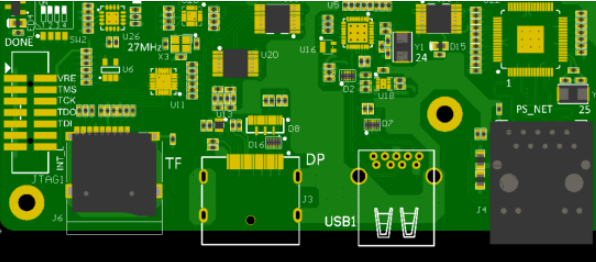
3 Wiring of high-frequency system
In high-frequency circuits, the distributed parameters of resistance, capacitance, inductance and mutual inductance of connecting wires cannot be ignored. From the perspective of anti-interference, reasonable wiring is to try to reduce the line resistance, distributed capacitance, and stray inductance in the circuit, and reduce the resulting stray magnetic field to the minimum, so that the distributed capacitance, leakage flux, electromagnetic mutual inductance and other interference caused by noise in the circuit are suppressed.
PROTEL design tools have been widely used in China. However, many designers only focus on the “routing rate”. The improvements made to PROTEL design tools to adapt to changes in device characteristics have not been used in design. This not only makes the design tool resources waste more seriously, but also makes it difficult for many new devices to exert their excellent performance.
The following introduces some special functions that PROTEL99 SE tools can provide.
(1) The fewer bends the lead wires between high-frequency circuit device pins, the better. It is best to use a full straight line. When bending is required, a 45° bend or arc bend can be used. This can reduce the external emission of high-frequency signals and mutual coupling. When routing with PROTEL, you can select 45-Degrees or Rounded in “Routing Corners” in “Design” menu “rules”. You can also use the shift+space key to quickly switch between line shapes.
(2) The shorter the lead wires between high-frequency circuit device pins, the better.
The most effective way for PROTEL 99 to meet the shortest routing requirement is to make routing reservations for individual key high-speed networks before automatic routing. Select shortest in “Routing Topology” in “Design” menu “rules”.
(3) The fewer alternations between the lead wires between high-frequency circuit device pins, the better. That is, the fewer vias used in the component connection process, the better.
A via can bring about 0.5pF of distributed capacitance. Reducing the number of vias can significantly increase the speed.
(4) When routing high-frequency circuits, attention should be paid to the “cross interference” or crosstalk introduced by the signal lines running parallel to each other. If parallel distribution cannot be avoided, a large area of ”ground” can be arranged on the opposite side of the parallel signal lines to greatly reduce interference. Parallel lines in the same layer are almost inevitable, but in two adjacent layers, the directions of the lines must be perpendicular to each other. This is not difficult to do in PROTEL but is easy to overlook. In “Routing Layers” in the “Design” menu “rules”, select “Horizontal” in “Toper” and “Vertical” in “BottomLayer”. In addition, the “Polygon plane” function is provided in “place”, that is, a polygonal grid copper foil surface. If the polygon is taken as one surface of the entire printed circuit board during placement, and this copper foil is connected to the GND of the circuit, this can improve the high-frequency anti-interference ability and also have great benefits for heat dissipation and printed board strength. (5) Measures to surround particularly important signal lines or local units with ground wires. “Outline selected objects” is provided in “Tools”. This function can automatically “enclose” the selected important signal lines (such as oscillator circuit LT and X1).

(6) In general, the power line and ground line of the circuit should be set wider than the signal line.
You can use the “Classes” in the “Design” menu to classify the network into power network and signal network. Combined with the setting of wiring rules, you can easily switch the line width of the power line and signal line.
(7) All kinds of routing lines cannot form loops, and ground lines cannot form current loops.
If a loop circuit is generated, it will cause great interference in the system. For this, the daisy chain wiring method can be used, which can effectively avoid the formation of loops, branches or stumps during wiring, but it will also bring problems that are not easy to wire.
(8) According to the information and design of various chips,
estimate the current passing through the power line and determine the required wire width. According to the empirical formula, it can be obtained that: W (line width) ≥ L (mm/A) × I (A).
According to the current size, try to increase the width of the power line and reduce the loop resistance. At the same time, the direction of the power line and the ground line should be consistent with the direction of data transmission, which will help enhance the anti-noise ability. When necessary, high-frequency choke devices made of ferrite wound with copper wire can be added to the power line and the ground line to block the conduction of high-frequency noise.
(9) The wiring width of the same network should be consistent.
The change of line width will lead to uneven characteristic impedance of the line. When the transmission speed is high, reflection will occur, which should be avoided as much as possible in the design. At the same time, the line width of parallel lines should be increased. When the center distance of the line does not exceed 3 times the line width, 70% of the electric field can be kept from interfering with each other, which is called the 3W principle. This can overcome the influence of distributed capacitance and distributed inductance brought by parallel lines.
4 Design of power line and ground line
In order to solve the power supply noise introduced by high-frequency circuits and the voltage drop caused by line impedance, the reliability of the power supply system in high-frequency circuits must be fully considered. There are generally two solutions: one is to use power bus technology for wiring; the other is to use a separate power supply layer. In comparison, the manufacturing process of the latter is more complicated and the cost is more expensive. Therefore, network-type power bus technology can be used for wiring, so that each component belongs to a different loop, the current on each bus on the network tends to be balanced, and the voltage drop problem caused by line impedance is reduced.
The high-frequency transmission power is relatively large, so a large area of copper can be used, and low-resistance grounding surfaces can be found nearby for multi-point grounding. Because the inductive reactance of the ground lead is proportional to the frequency and length, the common ground impedance will increase when the operating frequency is high, thereby increasing the electromagnetic interference generated by the common ground impedance, so the length of the ground wire is required to be as short as possible. Minimize the length of the signal line and increase the area of the ground loop.
Set one or more high-frequency decoupling capacitors at the power supply and ground ends of the chip to provide a nearby high-frequency channel for the transient current of the integrated chip, so that the current does not pass through the power supply line with a large loop area, thereby greatly reducing the noise radiated outward. Choose a monolithic capacitor with good high-frequency signal as a decoupling capacitor. Use a large-capacity tantalum capacitor or polyester capacitor instead of an electrolytic capacitor as an energy storage capacitor for circuit charging. Because the distributed inductance of the electrolytic capacitor is large, it is ineffective for high frequencies. When using electrolytic capacitors, they should be used in pairs with decoupling capacitors with good high-frequency characteristics.

5 Other high-speed circuit design technologies
Impedance matching refers to a working state in which the load impedance and the internal impedance of the excitation source are adapted to each other to obtain the maximum power output. When high-speed PCB wiring is used, in order to prevent signal reflection, the line impedance is required to be 50Ω. This is an approximate number. Generally, the baseband of coaxial cable is 50Ω, the frequency band is 75Ω, and the twisted pair is 100Ω. It is just an integer for the convenience of matching. According to the specific circuit analysis, parallel AC termination is adopted, and the resistor and capacitor network are used as the termination impedance. The termination resistor R must be less than or equal to the transmission line impedance Z0, and the capacitor C must be greater than 100 pF. It is recommended to use a 0.1UF multilayer ceramic capacitor. The capacitor has the function of blocking low frequencies and passing high frequencies. Therefore, the resistor R is not the DC load of the driving source, so this termination method has no DC power consumption.

Crosstalk refers to the unwanted voltage noise interference to the adjacent transmission line due to electromagnetic coupling when the signal propagates on the transmission line.
Coupling is divided into capacitive coupling and inductive coupling. Excessive crosstalk may cause false triggering of the circuit, resulting in the system not being able to work properly. According to some characteristics of crosstalk, several main methods to reduce crosstalk can be summarized:
(1) Increase the line spacing, reduce the parallel length, and use jog wiring when necessary.
(2) When the conditions are met, adding termination matching to high-speed signal lines can reduce or eliminate reflections, thereby reducing crosstalk.
(3) For microstrip transmission lines and strip transmission lines, limiting the routing height to within the range requirements of the ground plane can significantly reduce crosstalk.
(4) Under the condition that the wiring space allows, inserting a ground wire between two lines with severe crosstalk can play an isolation role, thereby reducing crosstalk.
Due to the lack of high-speed analysis and simulation guidance, the quality of the signal cannot be guaranteed in traditional PCB design, and most problems must wait until the plate making test to be discovered. This greatly reduces the efficiency of the design and increases the cost, which is obviously disadvantageous under the fierce market competition. Therefore, for high-speed PCB design, industry insiders have proposed a new design idea, which has become a “top-down” design method. After multi-faceted policy analysis and optimization, most of the possible problems have been avoided, a lot of time has been saved, the project budget has been met, high-quality printed boards have been produced, and cumbersome and high-cost testing and error detection have been avoided.
Using differential lines to transmit digital signals is an effective measure to control factors that damage signal integrity in high-speed digital circuits. The differential lines on the printed circuit board are equivalent to differential microwave integrated transmission line pairs working in the quasi-TEM mode. Among them, the differential lines located on the top or bottom layer of the PCB are equivalent to coupled microstrip lines, and the differential lines located on the inner layer of the multi-layer PCB are equivalent to wide-side coupled strip lines. When digital signals are transmitted on differential lines, they are odd-mode transmission modes, that is, the phase difference between the positive and negative signals is 180°, and the noise is coupled on a pair of differential lines in a common mode. In the receiver, the voltage or current of the positive and negative lines is subtracted, so that the signal can be obtained to eliminate the common-mode noise. The low voltage amplitude or current drive output of the differential line pair realizes the requirements of high-speed integration and low power consumption.
6 Conclusion
With the continuous development of electronic technology, it is urgent to understand the signal integrity theory and then guide and verify the design of high-speed PCB. Some experiences summarized in this article can help high-speed circuit PCB designers shorten the development cycle, avoid unnecessary detours, and save manpower and material resources. Designers must continue to research and explore in actual work, accumulate experience, and combine new technologies to design high-speed PCB circuit boards with excellent performance.

